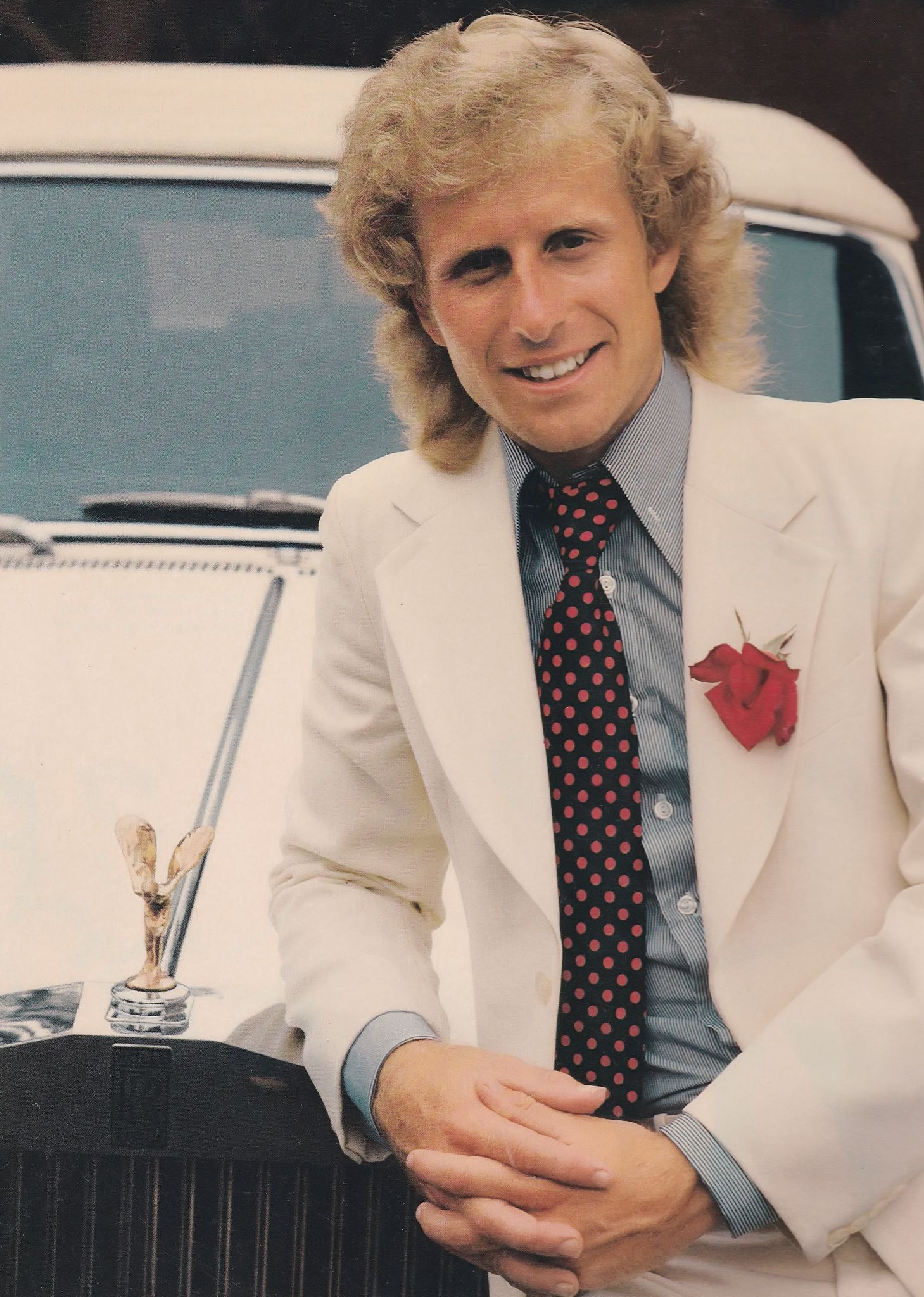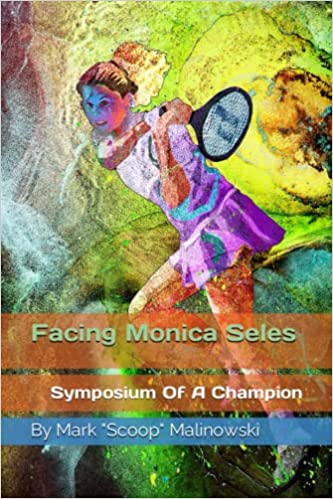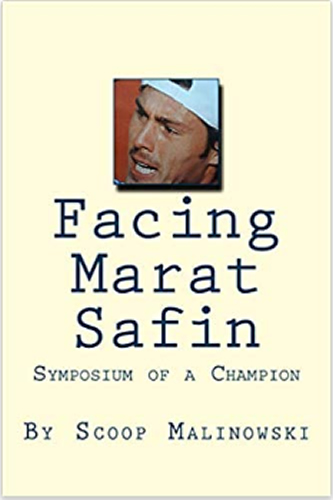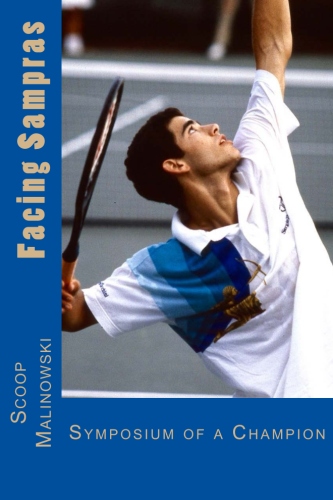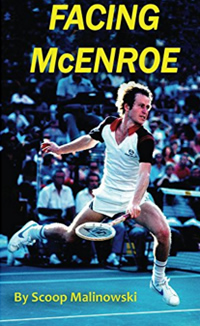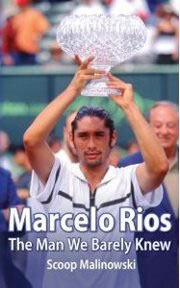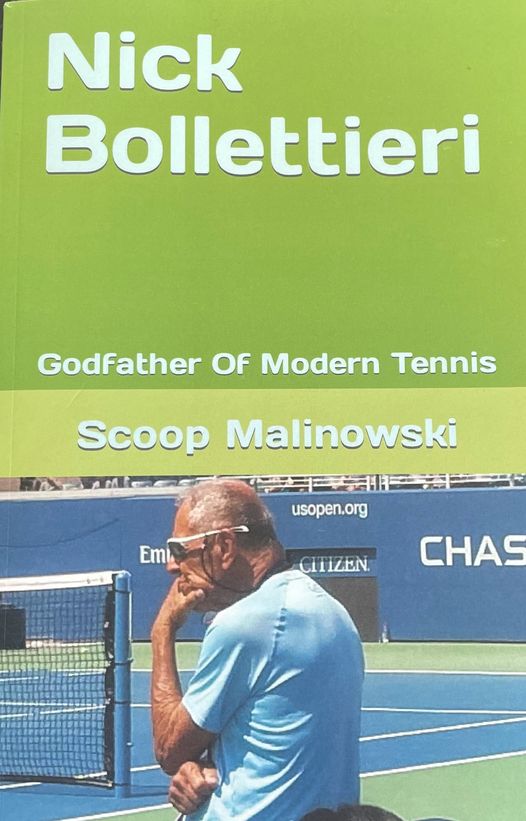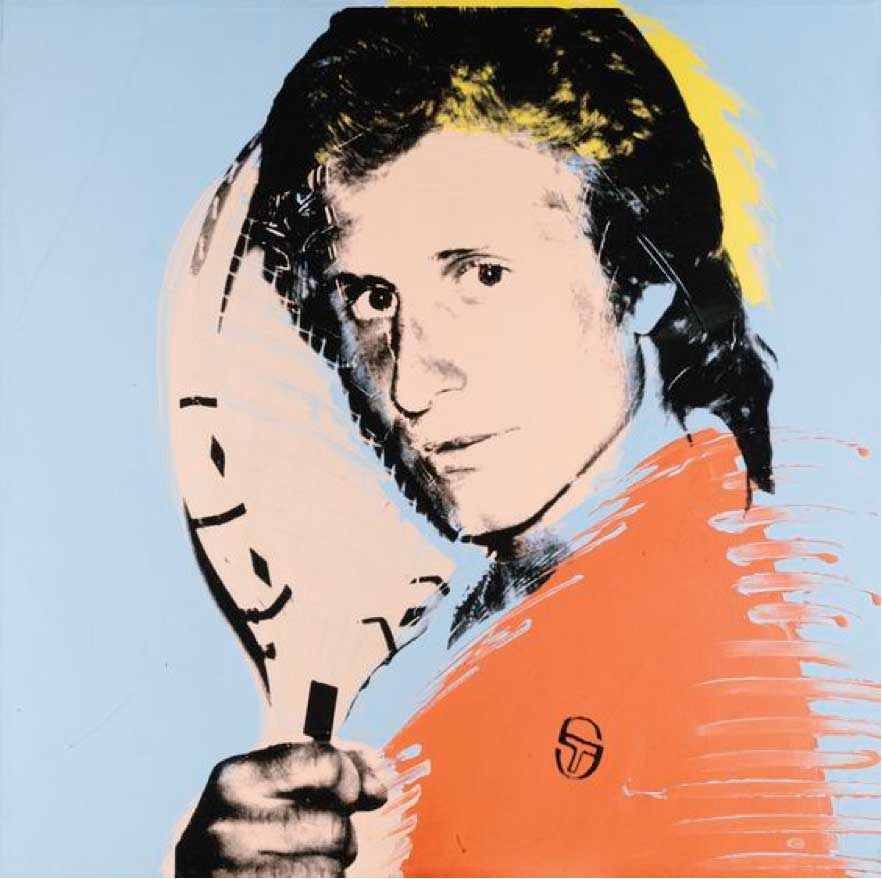
By Scoop Malinowski
The generous, charismatic, beloved “Lithuanian Lion” from Queens, New York once inspired a dear friend to say: “Vitas wouldn’t give you the shirt off his back if you needed it, he’d go home and get you a clean one.”
Vytautas Kevin Gerulaitis was born on July 26, 1954 in Brooklyn, NY. Taught by his father was a tennis instructor, “Vitas” played one year at Columbia University in New York before embarking in 1971 on a successful professional tennis career, highlighted by winning the 1977 Australian Open title vs John Lloyd 63 75 57 36 62, playing in the US Open final of 1980 vs. John McEnroe and the 1980 Roland Garros final vs. Bjorn Borg. Gerulaitis won 26 overall ATP singles titles and eight more in doubles including 1975 Wimbledon doubles title with Sandy Mayer. His highest career ranking was ATP no. 3 in February 1978.
After his playing career, which ended in 1986, Gerulaitis became a successful TV analyst for USA Network from 1988-1994. He also coached Pete Sampras during the 1994 Italian Open, due to Pete’s regular coach Tim Gullikson being on a family vacation. Sampras won the final in Rome vs Boris Becker in straight sets.
Just days after the 1994 US Open, Gerulaitis tragically died in Southampton, New York, while sleeping in a guesthouse of a friend, due to carbon monoxide poisoning.
This feature – a collection of memories, stories and anecdotes – is a tribute to one of the most popular and colorful champions in the history of tennis…
Chris Lewis: Before commenting on his game, I would like to say a few things about Vitas, the person. On the tour, he was universally liked. Flamboyant, charismatic, witty and incredibly generous, Vitas was always great company, with a tremendous sense of life. With Vitas, there NEVER was a dull moment. Whether it was watching his favorite sports teams, heading out to Studio 54 in his Rolls Royce or practicing for the US Open at his Long Island home, Vitas enjoyed himself. He lived life as if every second counted. And he was popular because wherever he went, he was always in good humor. People loved being around him, and he them.
For example, even though he wasn’t exactly an embodiment of the values represented by that golden era of Australian tennis, when Australia ruled the tennis world, he was well liked by the Australian greats. For instance, he got on tremendously well with Fred Stolle and I know that Tony Roche also thought highly of Vitas and you only had to look at who attended his funeral to see how highly regarded he was by his contemporaries. As far as his playing goes, he definitely was NOT a subscriber to ‘The Seles Principle.’ He was no 800 lb. gorilla, his game had no ‘heft.’ It was a game built purely around speed and reflexes – lightning quick foot speed and even faster cat-like reflexes. He was also an extremely quick thinker and decision maker, making full use of a limited arsenal to exploit any of his opponents’ weaknesses. He was also a guy who wasn’t scared to take the initiative by coming in behind a relatively weak second serve, backing himself – and his speed – to worry the guy into making a return error. You need a special sort of courage to do that.
His was a game that said: “pass me or lob me fifty times in the next two hours and the match is yours.” Bjorn could do it, Jimmy could do it, Ivan could do it, John could do it, but there weren’t too many others who could do it often enough to beat him consistently. To quote Peter Bodo, ‘Vitas was a player who fits into the, One thing I’m confident about, though, is that it’s pretty easy to overlook the value of speed and quickness. Give me a player with world class speed (and I’m talking track-and-field world class), consistent groundstrokes, and a strong mind and – bingo! – he’s Top 5 for sure category. In Vitas’ case, it wasn’t that he relied on consistent groundstrokes and his speed around the baseline to win matches, even though he did this well when he couldn’t get in, he relied on consistent volleys and his speed around the net. I think another factor in Vitas’ on-court success was his larger than life off-court status; he was a true celebrity in the tennis’ rock ‘n roll era. Didn’t matter where he was, walking down the streets of Manhattan, dining in a fashionable restaurant in London or stepping on to the Concorde in Paris, Vitas turned heads. He was the guy who hung out with guys like Mick Jagger and dated Vogue cover supermodels like Janet Jones. Like Bjorn, Vitas brought fans through the gate. Crowds wanted him to win. Most of the time, the guys he played just didn’t have nearly the same status, nor the same star quality. A born showman, Vitas nearly always established a very positive rapport with the spectators. He engaged them. They wanted to see HIM play the next day, not the other poor sap. He was exciting to watch. Is this a factor in a tennis match… the psychological factor involved when playing a BIG name? You bet — unless you’re one of those anti-hero types who likes to spoil the script by ruining the ending. Didn’t happen that often, though. Just against the very best. Like the sixteen times in a row he was beaten by Jimmy and upon finally beating him for the first time, Vitas’ immortal words to the press were, “Nobody beats Vitas Gerulaitis seventeen times in a row.” Classic Vitas!
I mentioned in an earlier post that I practiced extensively with Vitas. Just a word about that. On the practice court, Vitas was all business. His work ethic – he was a Harry Hopman protégé – was flawless. He was easily one of the Tour’s most hard-working, conscientious players on the practice court. Tireless, even after a VERY late night, or nights. Like everything he did, he loved to play. He was one of the few guys who actually ENJOYED pushing himself to the max in practice, and then heading off for some interval training afterwards. Nicknamed “Broadway Vitas” by the press, he lived life in the fast lane, all the time. To me, his legacy is that of someone who squeezed out every ounce of life before his accidental and tragic death. He was both a great player and a great person.
John James: It is a match I would like to forget. I had a very good tournament beating some higher ranked players and reaching the semis. Vitas beat me 6-0,6-0. Very embarrassing. Feature match on a Saturday afternoon. I remember I really played okay. He was just too good for me. I somewhat consoled myself by realizing that we had very similar styles of play. He was just much better at it. The other main thing I remember from the match was how quick he was. None of my shots were big enough to get anything by him. A side note. After I stopped touring I played a lot of tournaments in the New York area. Many of those were held at the National Tennis Center where Vitas Gerualitis Sr. was a coach. He regularly came to watch my matches and chat afterwards. Very nice person. I was flattered that he took an interest in my tennis when he had a son who was such a great player.
Bill Koegler: I was very close friends with Vitas at the time of his death. Incredibly sad. Vitas and I had some wild times together, and he and I had many things planned for the future. I collect cars, and he sometimes would drive one around for a few days when he was in Los Angeles, and he had a key to my condo in Brentwood, near Barrington and San Vicente, between Sunset and San Vicente. He and I and Wilt Chamberlain played three times at the Barrington courts and at The Riviera Tennis Club, where I was a member. Then they were gone.. passed away, my heart aches still.
Jan Triska: The era of McEnroe, Connors, Gerulaitis and Borg… they seemed divine, supernatural creatures, making a hard game look easy. The racquets were basic, not the high tech equipment of the “Big Three” era of men’s tennis. Try playing with the gear of 1980 today and see how it goes.
Gene Mayer: I played Vitas four times and lost each time. I never won a set from him. He was very quick, it was hard to dictate points against him, he transitioned from defense to offense seamlessly.
My lasting memory of Vitas… his huge heart, incredibly generous, always upbeat, a real zest for life, a real concern for inner-city youth and how took great care of his family.
Ed Wolfarth: In the late 70s I was one of his hitting partners at Alley Pond Tennis in Queens, where his dad, Vitas Sr, was tennis director. In the early 80s, Vitas often went to Turnberry Isles in Miami to hit and train with Fred Stolle. He had a great work ethic. One rainy day he took all the kids who were watching him train, bowling in his Rolls Royce! He was a pied piper. Loved by all.
John Cavanaugh: Vitas was the man . The writers would ask the players where they were going at night after the Open and they said, “Wherever Vitas is going.” Borg stayed with Vitas at his home on the Island with it’s own court. My dad Jack Cavanaugh covered the Open from Forest Hills to Flushing and always said the writers loved him. I was lucky enough to meet him back then. Broke my heart when he died. Took the wrong guy. One of the biggest gut punches I can ever remember in sports. Everyone shed a tear for Vitas. A true legend the likes of who we’ll never see again.
Lisa Kerkorian: I first met Vitas Gerulaitis at the US Open in 1981. I was coming into the player lounge as he was leaving. I was starstruck – I wasn’t yet 16 and here was a legend of the game, a man larger than life with an energy about him: charismatic and cool. My lasting memory, though, is of him as person. Jovial, fun to be around, always kind and generous with his time. I got to know him well in 1984, when eight of us went on an exhibition tour of Japan. He was wearing Maggia at the time, and I recall thinking how stylish he looked – and how my clothes felt second rate in comparison.
Kyle Johnson: I got to play doubles twice against Vitas on the Satellite circuit in San Antonio and North Carolina after I finished playing at Penn State. It was mid to late 70s. Players like Vitas, Connors, Nastase would sometimes play Satellites to stay sharp between the bigger tournaments. I remember Vitas hit with a lot of top spin, if you didn’t get in the right position to hit his ball it would bounce right over you. And he was just so friendly, so nice. Not like the other guys like Nastase and eh…
Rob Glickman: A lot of people don’t know who Vitas really was. Everybody thinks he was a cocaine addicted tennis pro. He worked very hard to get to no. 4 in the world, he trained very hard. He liked to party and date beautiful models like Carol Alt and Janet Jones. Vitas Sr. was my boss. Ruta was a year younger than me, I was two years younger than Vitas. Ruta was the most beautiful girl in the world. I had the biggest crush on her. One day at Port Washington I was playing with Larry Davidson, an excellent player, and on the court next to us was Vitas and John McEnroe playing a challenge match. While I was playing Larry, I was also watching them play at the same time [smiles]. Seven years later they were both in the US Open final. When Vitas was in 12th grade, McEnroe was in seventh or eighth grade. I trained with Vitas, two hours of drills, Harry Hopman had us doing everything. When we were all at Port Washington, you’re not exactly friends, more like competitors. Vitas was an amazing athlete, he could have been professioal soccer player or baseball player. He could have chosen any sport but he picked tennis. McEnroe also played soccer and basketball in high school and he chose to concentrate on tennis.
A lasting memory of Vitas? Probably going to Studio 54 and seeing Vitas there on the dance floor with two beautiful models. The confidence he had wherever he went. He was handsome, blond, confident and generous. He was my idol. Everybody wanted to be Vitas. Did you know he put white gauze tape on his grip? He learned that from me. I think about him almost every day. I wonder what he’d be like as a 60 year old. Like he was becoming a good TV analyst and interviewer. It’s too bad he passed away too young. Everybody loves Vitas, Pete Sampras, McEnroe, Connors, Borg. Did you see who came to his funeral? It’s great that you are doing a book about Vitas. I hope they make it into a movie.
Vitas artwork by Andy Warhol
ATP · Australian Open · Columbia University · New York City · Studio 54 · US Open · Vitas Gerulaitis



